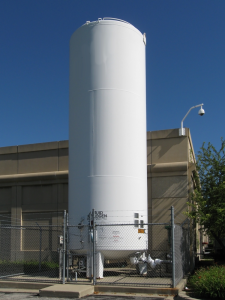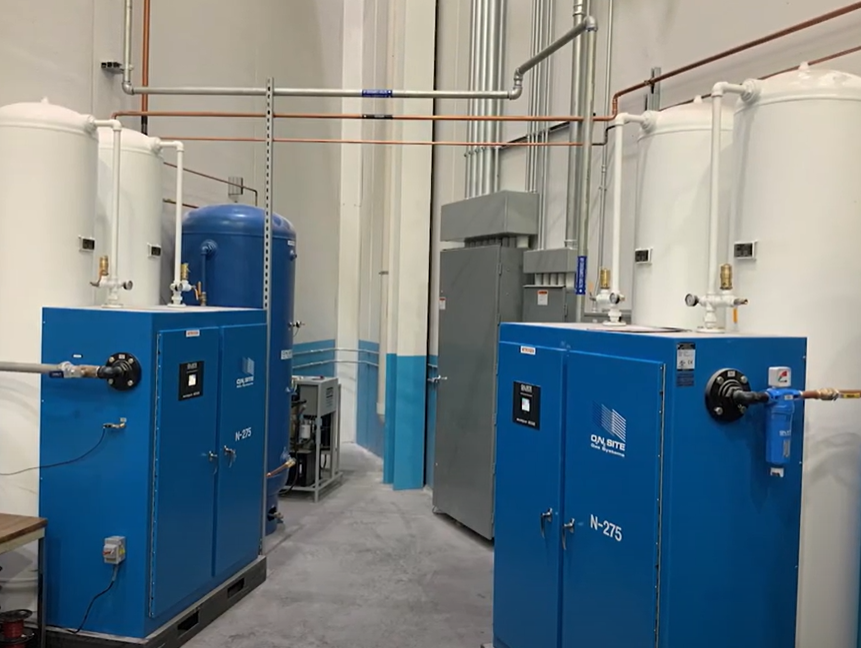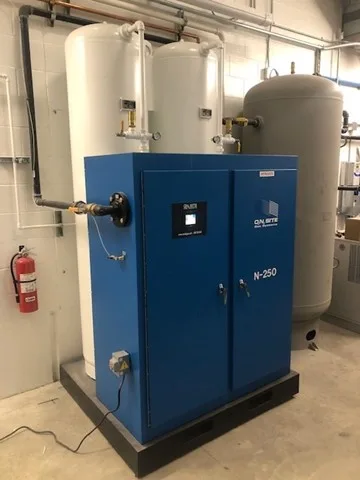Nitrogen is Used for Many Purposes
Nitrogen is an inert gas that is used in many industries in many ways. As a gas, it is often used to displace the oxygen, and other gases, present in the atmosphere. This can prevent food from spoiling during storage or can prevent unwanted chemical reactions in reactors and ovens. It can prevent fires and explosions in grinding operations by eliminating the oxygen necessary for combustion. As a cryogenic liquid (-272°F), nitrogen is used to quickly freeze delicate materials such as shellfish, berries, and microbes.
Liquid Nitrogen is Expensive!
Cryogenic air separation plants are large volume, energy intensive facilities that produce liquid nitrogen, oxygen, and argon. The liquified air products are very pure (99.999%) and are stored at approximately -300°F. These plants are generally located near large electrical infrastructure and large gas consumers such as steel foundries, chemical plants, or petroleum refineries. The nearby large gas customers can be serviced via direct pipelines. The remaining customers will be served by cryogenic tank truck deliveries. All the equipment used to produce, store, and use cryogenic gases is expensive. When you combine the capital expense with the energy and transportation costs associated with consuming liquified gases, you can see why it is not only expensive, but it leaves a large carbon footprint.
Know What Your Process Requires
With nitrogen applications ranging from inflating tires to quick freezing seafood, each one has its unique demands. Determining the exact nitrogen requirements for your manufacturing process is the starting point. Ask yourself the following questions:
- Does my process require liquid or gaseous nitrogen?
- What nitrogen purity does my process require?
- At what pressure?
- How much nitrogen is consumed, average and peak demand?
- How critical is the nitrogen supply to my process, do you need system redundancy?
If you do not need cryogenic liquid for your process (e.g. freezing), there are less expensive alternatives to satisfy your nitrogen demands.
If you do not know the answers to the above questions, Rohde Brothers would be pleased to assist you.
Your Tailored Solution
Just like clothing is tailored to fit you, Rohde Brothers uses the answers to the above questions to customize your nitrogen generation solution. The Rohde engineers will determine the appropriate technology and size the equipment so that it seamlessly meets your process requirements. Most onsite nitrogen generation systems run unattended for years without issues. With nearly no moving parts, the preventive maintenance becomes mostly filter changes. For system owners with staffing challenges, Rohde Brothers service department offers preventive maintenance programs to keep your equipment performing at its optimum.
Show Me the Money!
The air we breath is 79% nitrogen. To generate concentrated nitrogen at your plant site, air is compressed, dried, and the oxygen is removed. This all can be completed using 20-30% of the energy that a liquid nitrogen process consumes. When one considers the storage, trucking, and handling of a liquid nitrogen-based supply chain, onsite nitrogen generation will result in a 90% reduction in carbon footprint for this commodity. Bottom line, your company can generate its own gaseous nitrogen for approximately 20% of the cost of delivered liquid nitrogen. This results in a project payback of normally less than 1.5 years.
Imagine, No More
- Nitrogen truck traffic on site
- Unload tickets, invoices, checks to process
- Hazardous materials and delivery charges
- Contracts to negotiate
- Venting losses when not being used
- Cryogenic freeze hazards on site
- Tank and Equipment rentals
- Safety risk when unloading trucks
- Unplanned downtime from missed deliveries
Ready to talk more? Contact Craig Bahr and start a conversation around saving your company money today!
Craig Bahr
920-449-5733

